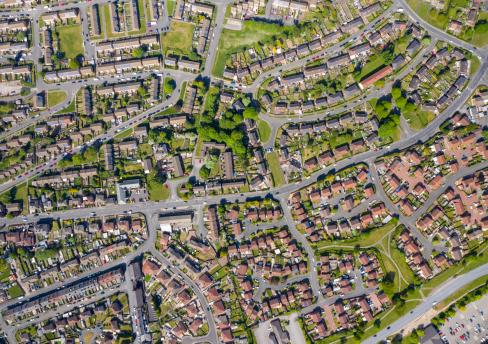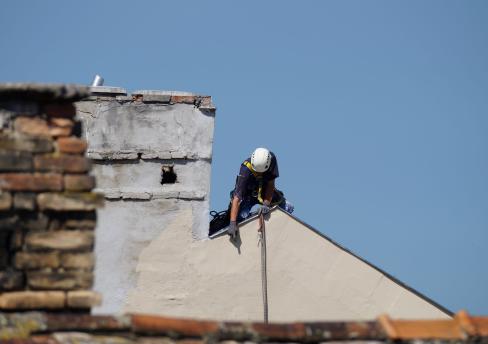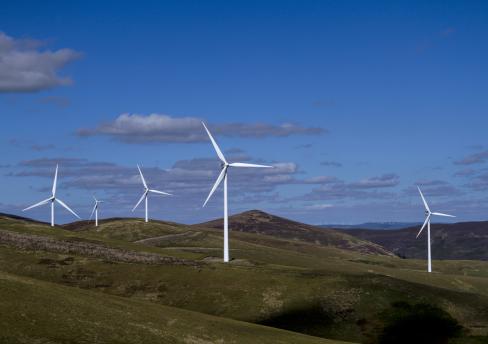The reduction of greenhouse emissions continues to be at the forefront of discussions regarding the global climate emergency, both in Scotland, and across the globe
There are many benefits to be drawn from woodland creation, including flood prevention, enhancing biodiversity and the many health benefits that they provide. Perhaps the most important benefit to be drawn from forestry however is the capacity of woodland to eliminate carbon dioxide (CO2), removing it from our atmosphere and slowing down the changes to our climate.
According to data published by the Scottish Forestry, Scotland's forests and woodlands sequestered 9.5 million harmful CO2 emissions in 2017 alone, with numbers only going up over the past three years. What's more, the Scottish Government has committed to a net zero greenhouse gas emission target by 2045, which is five years earlier than the rest of the UK. To achieve this ambitious target, the Government has undertaken to increase the size of the woodland carbon market by 50% over the course of five years, with the Woodland Carbon Code playing an important role in achieving this.
What is the Woodland Carbon Code?
Referred to as the Code throughout the remainder of this article, the Code has established a market for the purchase of carbon units to fund new tree planting.
Planting projects can be carried out by landowners and the Code seeks to encourage woodland creation that would otherwise not be carried out (i.e. not commercial forestry plantations that would be going ahead regardless of the existence of the Code). It can be viewed as an investment vehicle and a sound commercial endeavour for landowners with land that is prime for planting.
The Code generates carbon units, with one carbon unit equating to one tonne of CO2 removed from the atmosphere. Landowners can sell the carbon units to companies that are seeking to set-off their CO2 emissions by investing in these woodland projects, or indeed, the landowners can use the carbon units against their own estate or business emissions.
Carbon units are registered in the UK Woodland Carbon Registry, which contains both verified units, as well as pending carbon units, i.e. a promise to deliver carbon units in the future from land that has not yet been planted, but has the potential to house future woodland projects. Potential investors can therefore invest in existing verified projects, as well as in future projects that are undergoing the validation process which once verified, can be used to set-off against projected emissions, whilst at the same time supporting future woodland creation.
The process is as follows:-
- Project Preparation - this is the first step to be undertaken by the landowner in conjunction with a project developer, such as a land agent, who may also be able to source buyers for the units that will be generated;
- Validation - once a project is ready, it will then require to be submitted for its initial evaluation, at which point it is assessed against the Code eligibility criteria;
- Verification - this is the ongoing evaluation of the project against the requirements of the Code, to assess how much carbon the project has sequestered and its continued management.
Once a project has been validated, the promise to deliver carbon units, and the number of promised units, are registered in the Registry. Potential buyers can then view the details of the projects, as well as the number of carbon units generated. There is potential for significant return on investment, with companies in the UK reportedly paying between £7 and £20 per promise to deliver a carbon unit, although it is not yet clear on what price a verified carbon unit can attract, as not many projects have reached this point.
There are more technical steps to be complied with in this registration process and a good project developer can help guide you through all of these. More information can be found on the Code's website. The cost of going through the validation and verification procedures is approximately £750 - £1,150 per project and in addition, there are also the costs of implementing the project (i.e. the planting and ongoing maintenance), as well as the fees of any professional advisers.
Whilst the funding stream that a successful project can generate is a definite draw for investment in rural Scotland, the Code also creates an opportunity for landowners to contribute towards supporting a green recovery from the ongoing climate crisis. We anticipate that as the Code becomes more established and more projects become verified, there will be more interest from both landowners and companies interested in achieving their own net zero goals.
The content of this webpage is for information only and is not intended to be construed as legal advice and should not be treated as a substitute for specific advice. Morton Fraser LLP accepts no responsibility for the content of any third party website to which this webpage refers. Morton Fraser LLP is authorised and regulated by the Financial Conduct Authority.










